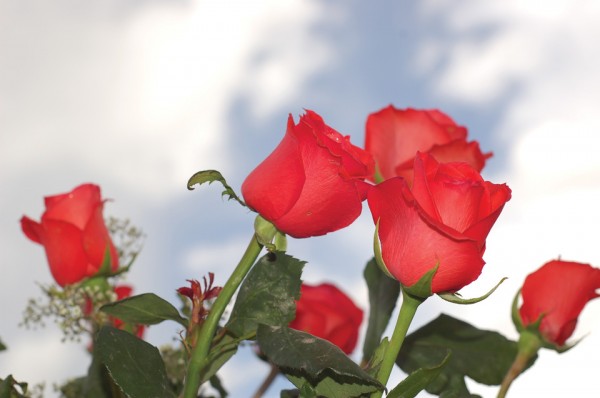Roses in Guatemala Part II
Now that you’ve planted those roses, which flourish so vigorously in Guatemala, what do you do with them? I once started an article for a Guatemalan newspaper with the comment that it’s hard to kill a rose here. The editor took that comment out with a rebuke, “That’s not what the readers want!”
But roses are hardy, especially in Guatemala’s mild and even climate. That said, there are a few things to look out for. Bugs range from Japanese beetles to aphids and thrips. The latter tiny under-leaf insects are easily eliminated with a soapy spray (I like Axion dishwashing liquid) that cannot harm the environment. Those beetles are a different matter. Whatever you do don’t buy a Japanese beetle trap, containing a pheromone to attract the pests. For sure you’ll have a bag of bugs, but you’ll also attract every beetle for blocks downwind of the pheromone. Earwigs love roses but don’t like a soap spray. You can pick the beetles off, even when they are busily munching a bud or bloom, and drop them in a bottle of Axioned liquid.
Rose leaves are almost always affected by a fungus called black spot. See it once and you’ll recognize it forever. It debilitates the leaves and can cause leaf drop. But I have never seen a rose fatally affected by black spot, so while fungicide does work, so does regular picking of leaves affected by the fungus. Avoiding extremely blighted plants in the nursery is also a good idea. Picked leaves should be deposited elsewhere to avoid reinfection of existing or fungus-free plants.
The most fun I’ve had with roses has come from propagating them. You can let the rose go to seed in the form of a rose hip, give it a dormant period in the refrigerator for about 30 days and then plant the seeds. There is one drawback, or maybe exciting discovery through this method. You know the genes, and the color and fragrance of the parent plant that produces the hips and seeds, but the other partner plant is whatever bloom the bee, butterfly, hummingbird or even beetle visited before pollinating the host rose blossom. Who knows what you’ll end up with?
Cloning by layering I’m saving for an article on children’s gardening.
Pruning is a welcome relief to the rose. Inward growing canes (the long spindly branches) can scratch an undamaged cane, and roses do not like to be pricked with even their own thorns, any more than I do.
A teaspoon of fertilizer, usually Triple 15 here, does wonders for a rose. Beware of pure nitrogen, or urea, since it can and will burn plants. (On the other hand if you want to burn your initials in a lawn, or a heart in your girlfriend’s, urea is ideal.)
Raking around the base not only eliminates competing weeds but also creates mini furrows for that Triple 15.
I’ll close by wishing you a very happy rose garden!
